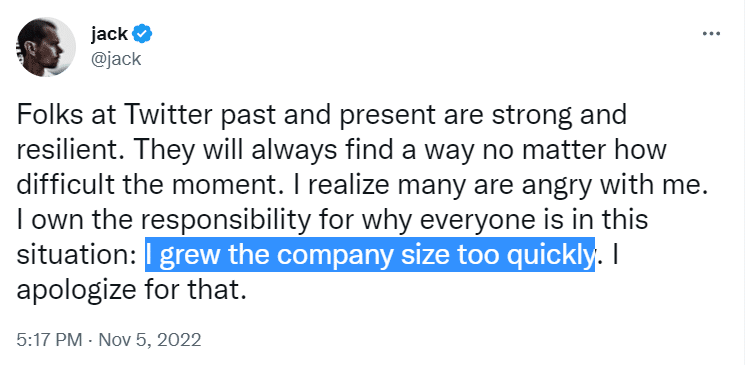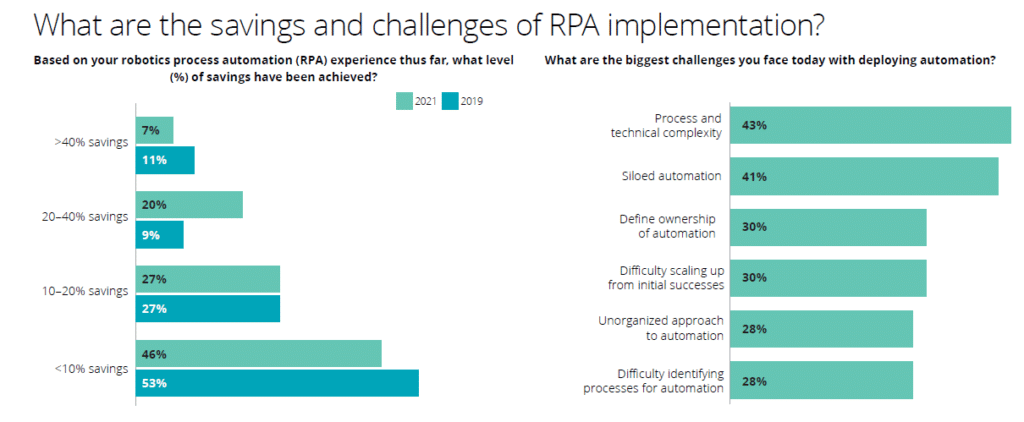
The most massive layoffs in the IT industry for the last decade started with Elon Mask’s arrangement to halve Twitter staff at the beginning of November 2022. Unfortunately, this decision wasn’t a hasty urge of the excentric businessmen as some believed it to be. The following cutbacks rolled by the California coast as well as the most remote corners of the world. Why did this happen? Could it be prevented? How will it affect the future of the IT industry? What do we have to do now? Let’s dive into the causes and consequences of Dark November 2022.
What has caused severe layoffs in Amazon, Twitter, Meta, and the rest?
The simple answer would be the economic recession caused by the new geopolitical environment. We already saw how similar crises affected the industry in 2008, during the Great Recession. Back then, MySpace fired almost 30% of its staff, claiming that it wanted to go back to the “start-up culture”; Yahoo sacked more than 10% of its personnel in several waves; Google cut several hundreds of jobs in marketing, sales departments, recruiting, and radio ads. From 2008 to 2009, telecommunication giants and software enterprises like Phillips, IBM, Microsoft, Ericsson, Dell, and AT&T fired people in thousands!
However, a drastic global crisis and the war in Europe are not the only reasons why so many tech talents have lost their jobs, and even more specialists will be sacked in the coming months.
Just look at how tech companies’ executives and spokesmen explain their decisions to cut their staff to the public and their employees.
- Kelly Nantel, Amazon’s spokesperson says that there are two things to blame for the November layoffs: “macro-economic environment and several years of rapid hiring.”
- Patrick Collison, CEO of Stripe confesses: “We overhired for the world we’re in.”
- The previous owner of Twitter, Jack Dorsey also took a part of the blame for firings by stating that he grew the company too fast.

Image source: Jack Dorsey on Twitter
The overhiring caused by the Covid-induced skyrocketing growth of the IT sector hit back and made the most promising, largest, and innovative companies shrink their ranks.
After Twitter, Zuckerberg’s Meta (Facebook and Instagram) announced that it’s going to farewell 13% of its staff and in mid-November, Amazon confessed that it’s going to cut almost 10,000 of its jobs (which is almost 3% of the total staff of the e-commerce giant). These companies are not the first and surely not the last ones to shrink their personnel.
What should we expect from the IT industry in 2023?
The global economic crisis is not over yet, and the chances that we will fully feel its effect on our pockets in 2023 are pretty high. The main business trend for the year to come will be cost and investment reduction. Here are what we expect.
Even fewer investments in startups
Analyzing venture funding for startups in 2022, we can state that there is a global fall in both money fundraised and the number of fundraising agreements. For example, the number of fundraising agreements in the USA in Q2 2022 has almost halved compared to Q1. The venture funding for European startups on the other hand has fallen by 19%.
This trend in its turn will lead to fewer startup companies erupting and even fewer job opportunities for tech talents around the globe.
Fewer investments in R&D
Research and development which used to be the driving force of intellectual technologies and software development is also under threat due to the high risks of investments not being returned.
For example, a large portion of jobs cut by Amazon was from a flashy but not profitable Alexa AI department. This virtual assistance technology was offered to the market almost a decade ago, but since then, it hasn’t shown some particularly innovative functionality even though the yearly spending on its research has been at about 5 billion dollars each year for the last couple of years.
Fewer expenses on supporting departments
Marketing, sales, management, recruiting, and other supporting departments will be the first to feel layoffs in IT companies.
In Amazon, again, a large part of the jobs cut was from the recruiting department. According to some leaks (that were not yet proven by the representatives of the company), Amazon robotics AI is going to replace human recruiters. We will return to this amazing example later in this article.
Lower wages and higher demands for tech talents
More and more specialists in the industry claim that the extremely high wages of engineers and developers were a “bubble” and in 2023 the market will “level off” the disproportion between the job duties and the salaries of tech specialists.

GIF source: Blackbooks.gifglobe.com
What are the global solutions for the new reality?
Every crisis opens doors for new opportunities, and the economic recession’22 is no exception. IT companies will try to prevent the possibility of a similar critical situation in the future and will try to minimize their expenses. Here are two directions in which we believe the global IT industry will move.
Rise of outsourcing and outstaffing IT services.
Let’s put it that way: If in the Covid era, companies would opt for outsourcing and outstaffing instead of hiring hundreds of in-house employees in the first place, the scale of November layoffs would be much smaller.
Choose fixed-bid outsourcing if you know exactly what kind of software you need to develop or research to conduct. In this case, you only pay for the final result – the ready-to-use application and don’t have to hire, manage, and fire new employees.
Opt for outstaffing if you’re looking for a more agile way of cooperation, want to participate in hiring, onboarding, and managing your new tech talents, but don’t want to bother with organizational and HRM issues.
Another reason why companies will choose outsourcing and outstaffing more often is that this cooperation approach is usually much cheaper than having an in-house team of developers.
The use of RPA and automation
RPA and automation are extremely efficient for cost reduction. We saw that already during the Industrial Revolution of the mid-19th century. We believe that the further development of RPA will bring us even closer to the new economic grand leap.
The trend for automatization is surely not new. According to the 2021 Deloitte survey on global shared services and outsourcing, 56% of companies that filled out the questionnaire have already implemented some kind of RPA and automation in their businesses, and 33% were planning to do so in the upcoming years. Compared to 2019, RPA got from second to first place among key transformation enablers.

And it is obvious that the modern RPA software is far more refined than the weaving machines of the 1820s. Modern robotics process automation is a component of AI-assisted coding technologies. Some companies even try to use artificial intelligence to substitute some of the human roles in their organizations fully.
Artificial intelligence
After the grand November layoff, rumors appeared about Google’s ongoing development of robots that would write their own code. So, maybe, the Alphabet Group decided to sack several hundred of its tech talents because it already had some promising ideas.
According to some more trustworthy (though still confidential and internal) documents of Amazon, the company will allegedly use AI-based Automated Applicant Evaluation technology instead of its recruiters. The technology will scroll through all the CVs received by Amazon and pick only those applicants who can be further interviewed by human recruiters. The company fired several hundred talent sourcers in November this year, and the rumors state that these positions will never be open again.
It’s not Amazon’s first try to use AI. In 2012, the e-commerce leader bought Kiva, a warehouse robotics technology. It was a great success and allowed the company to shrink its warehouse staff drastically.
In 2014 robotics AI Amazon made the first try at recruitment. Back then, the company got into scandal as its robotic recruiters had a sexist bias. That was a big data mistake – the algorithm of the AI recruiter was based on data for previous years of hires and firings in the company, so the software decided that if Amazon preferred to hire men before, it should stick to the practice and decrease the percent of women in the staff.
MWDN experience with AI recruitment software
In MWDN, we manually pick tech talents for every particular client, and we don’t see yet technologies on the market that would be able to do this job better than our experienced recruiters. Of course, we use an applicant tracking system that automatizes some of the most repeatable actions, so our sourcers and headhunters have more time for more challenging tasks.
Our recruiters also apply semantic analysis and contextual validation when screening through the open bases of applicants and our closed databases.
Overall, we believe that an AI-based recruiting department can be a way out for a large enterprise that requires a constant flow of labor force. However, it won’t work for companies like ours, where every new talent is a precious stone that the recruiters should see shining even if they have a not-so-good CV.
Code your own AI with MWDN
Our tech talents have been working on projects where they had to develop artificial intelligence and automation solutions for many years. Whenever your business needs to automatize its processes, increase its efficiency with the help of AI or RPA, or if you have any questions concerning AI and coding, don’t hesitate to contact MWDN. Let our managers tell you more about our field experience and capabilities.